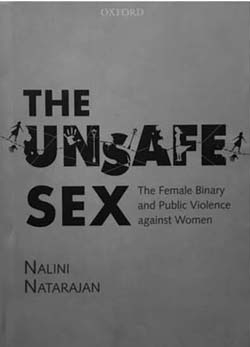Anxiety about the safety of women in India has always been a topic of discussion in social and academic meetings. While articulate non-academics bemoan the continuing relevance of the topic in a developing and seemingly modern society, academics attempt to understand the underlying reasons for the persistent perception of women as vulnerable beings. The debate took a more urgent turn when world media reported the gang rape of a young physiotherapy intern in a moving bus on one of the arterial roads of Dehi during the night of December 16, 2012. The media’s coverage of the incident and civil society’s mobilization to demand an amendment in the law led to the passing of The Criminal Law (Amendement) Act of 2013. This law is also known as Nirbhaya Act, after the name given by a powerful media house to the rape victim. During the course of these events, world media declared Delhi an unsafe city while the media gave the victim an alias which means the fearless one. The levels of anxiety about women’s safety in Delhi increased to such an extent after this incident that most women avoided being out late in the evening and when they had to they were frequently advised by friends that they should always apprise someone of their whereabouts when travelling alone after dark in the city.
In The Unsafe Sex, Nalini Natarajan acknowledges that the female sex is considered unsafe in India and attempts to understand the cultural origins of this perception in the country. The crux of Natarajan’s argument is that women are viewed within a binary which establishes and reiterates the perception that women are the unsafe sex in India. Women within the house are seen as sources of ‘dignity, safety and even power’ (p. x) whereas when women are outside the house they are seen as sources of ‘danger, shame, exploitable weakness and vulnerability, open to male attack’ (p. x). Natarajan spots this binary in Indian mythology and argues that it continued historically through the colonial period, in the lives of indentured Indians, during the reform movements across India, in the freedom movement, in the Partition riots, and in Bombay Cinema.

